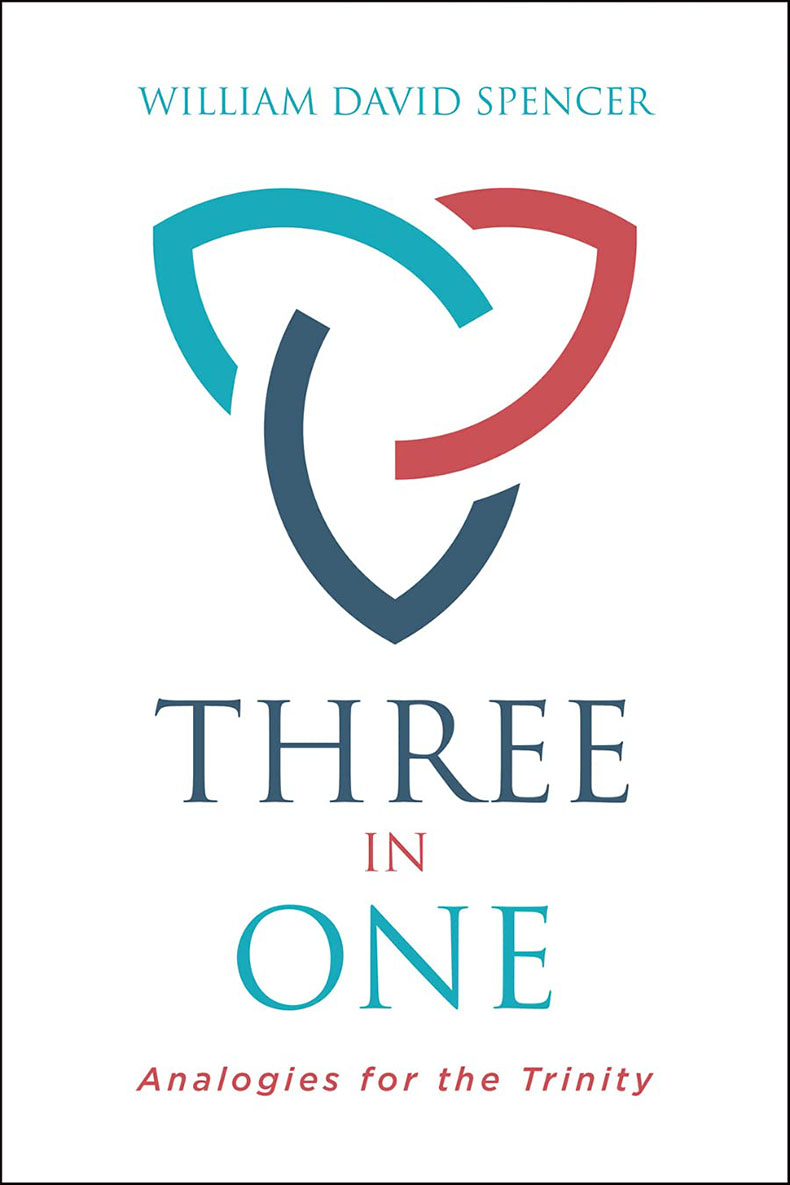Three in One: Analogies for the Trinity, by William David Spencer. Grand Rapids: Kregel Academic, 2022. 242 pp. $15.99.
William Spencer is a Presbyterian minister who serves as the Distinguished Adjunct Professor of Theology and the Arts at Gordon-Conwell Theological Seminary. Spencer is a church planter, long-time professor, and prolific author who primarily writes in the areas of egalitarianism, theology, urban culture, and aesthetics. The premise of this work was born from the marriage of two desires. The first is a concern to shore up orthodox trinitarianism within evangelicalism against the tightening grip of trinitarian eternal functional subordination. The second is a desire to forge “a biblical understanding of the Trinity in correspondence with the Scriptures and primal creeds of the Church” (10). These desires produce a work that evaluates the “meanings inherent to both the images and also the explanations of these images” (14) regularly used by Christians in understanding trinitarianism. Spencer discovers that, although trinitarian images and analogies “can convey truth about God,” the church must take great pains to “avoid the historical errors that have clouded and misrepresented God’s nature” (14). Examining these historical errors, along with their creedal foils, frees the Church to employ metaphors, symbols, and images about the triune God, without being enslaved to their misappropriation and applications. This is the tension in which Spencer thrives.
Chapters 2 and 3 ask if Christians should even use images and metaphors to describe the Trinity, and if so, what should be the guide? The answer is a cautious yet resounding, yes! Establishing the inviable uniqueness and otherness of God is the foundation upon which one should build an understanding of the Trinity. Simultaneously and paradoxically, however, the cornerstone of the doctrine is also a firm belief that God has clearly and truthfully revealed himself, particularly in the incarnation of Jesus Christ. These two realities force Christians into imagining God through metaphor while relying on Scripture for method. Scripture demonstrates that Jesus as the master teacher employed multiple forms of linguistic and artistic imagery (e.g., hyperbole, synecdoche, fishing, farming, drama, etc.) in revealing God.
In chapters 4 and 5, Spencer finally delves into the meat of his book and explores the historic and biblical use of light as divine imagery. Spencer examines how heresies, such as Apollinarius’s subordinationism and Nestorius’s radical dyophysitism, misapplied imagery of the sun and rays. In contrast, the Cappadocian Fathers corrected these mistakes resulting in the councils of Constantinople and Ephesus. Fathers like Origen and Clement used the light imagery of Hebrews 1:3 in ways that others, such as Irenaeus would oppose. The use and misuse of light imagery were most pronounced in Athanasius and Arius. Spencer demonstrates Athanasius’s superior taxonomy in understanding and employing the imagery of light to explain Nicea’s stance. The image of radiance and reflection do not speak to ontological or attributive order. Indeed, as Spencer notes, the Athanasian taxisshows that equality of substance must equal equality of attributes (125). A chart showing various Church Fathers’ use of this imagery on page 126 is particularly helpful (supported by an extended exploration in the appendix).
Chapters 6 and 7 examine imageries of water and static physical things, such as shamrock leaves or an egg. These usually lead to some form of modalism and Spencer focuses on Noetus’s and Sabellius’s modalistic monarchianism. These images “provide an illustration of shared equality, showing that three can be one substance” (137). Yet, as Spencer correctly notes, they also undermine the “integrity of the eternal threeness” (137). The persons of the Trinity are not simple manifestations or one substance in differing modes; they are distinct, though only in unbegottenness, begottenness, and spiration (in my view). With this, Spencer shows that imagery “is not always a point-by-point allegory. It is often a one-point to one-other-point analogy” (129).
Human imageries are compared in chapters eight and nine. Spencer warns of the dangers of applying the creedal language, particularly persons, to modern, psychological beliefs of consciousness. “‘Person’ as used in the Church doctrine of the Trinity bears no direct relationship to personality” (160). There are not three personalities within the Godhead. It is here that the author dives into the Cappadocian counter to the error of divine modes of subsistence, citing reasons for Ephesus and Chalcedon. Ironically, Spencer denies the understanding of eternal generation as a semi-Arian (particularly Eusebian) over-application of the communal divine imagery. In all, Spencer succeeds in showing that creedal, orthodox theology must help to shape and check trinitarian imagery. Images, metaphors, and analogies are as limited as the minds that shape them.
Spencer’s strengths lie in his understanding of the historical and theological development of trinitarian doctrine. Indeed, Christian doctrine is often the extent of the application of biblical metaphors. Whether cata- or apophatic, declarations of the Almighty must employ creative imagery. Not because God can be conceived of, but because he often reveals himself through analogical means. The finite can only image the infinite. And we should do so.
This book, however, attempts to do too much. Spencer’s extensive exploration into the teaching methods of Jesus was, respectfully, a distraction to his thesis. Additionally, Spencer spends too much time explaining the various uses of imagery rather than developing the interplay between heresies, imagery, and their creedal corrections.
Spencer deserves commendation for this impressive work and his thesis blunts one’s reaction to throw the proverbial analogical baby out with the heretical bathwater. “‘An image can be worth a thousand words.’ If it’s a good orthodox one, it can indeed” (203).
Brett Williams
Central Baptist Theological Seminary, Plymouth, MN

